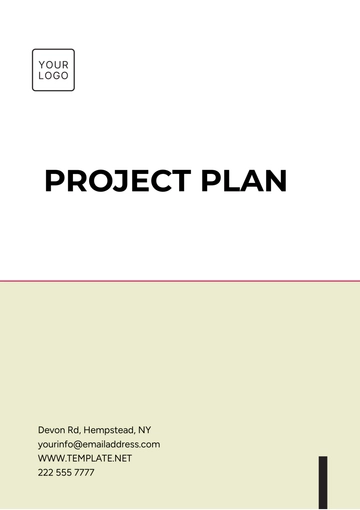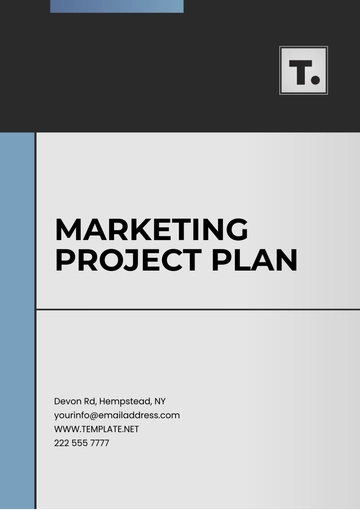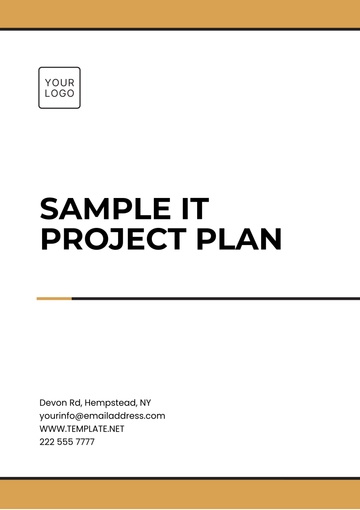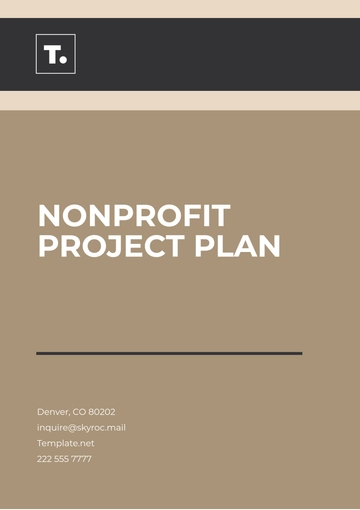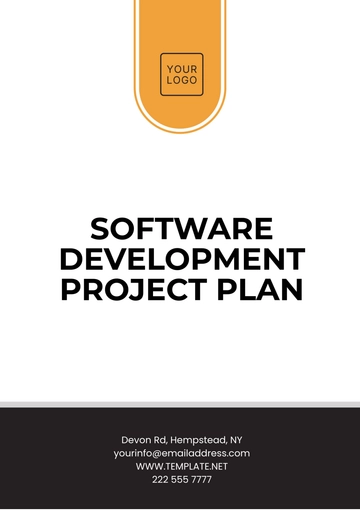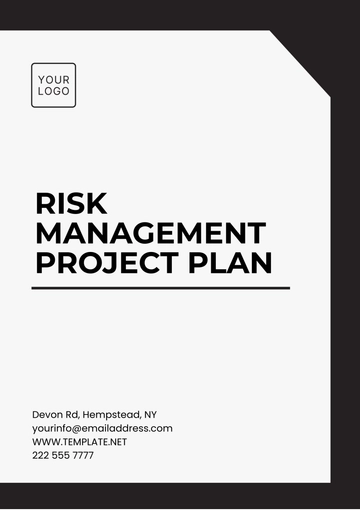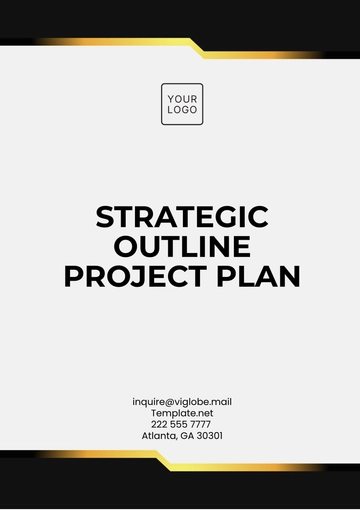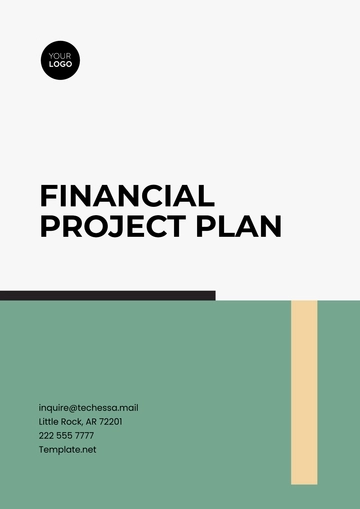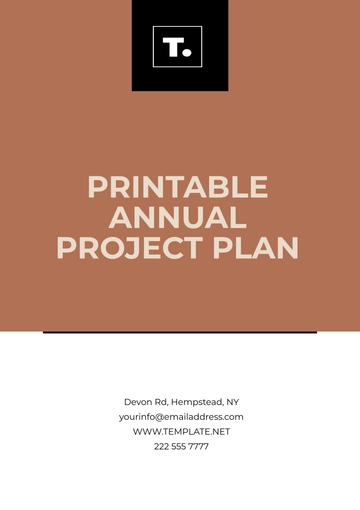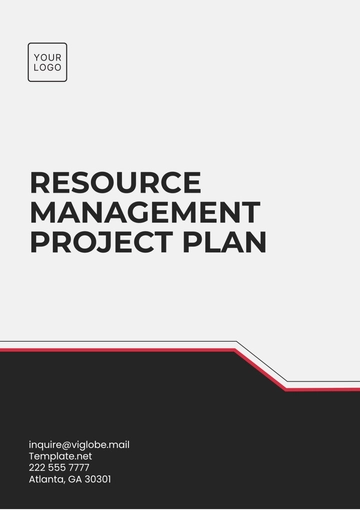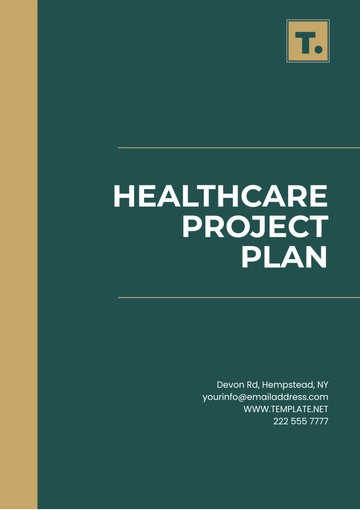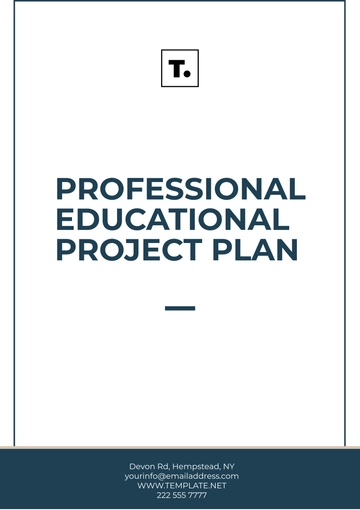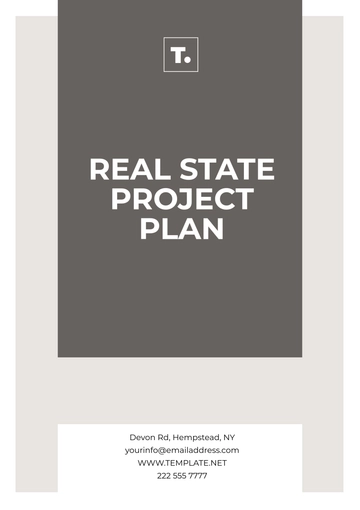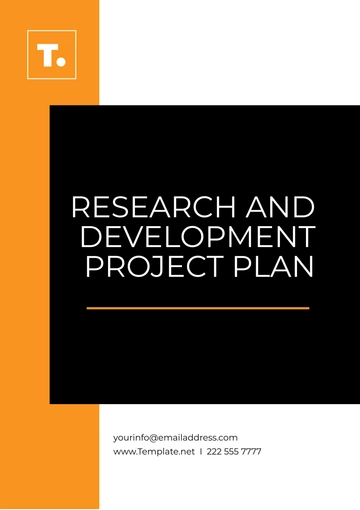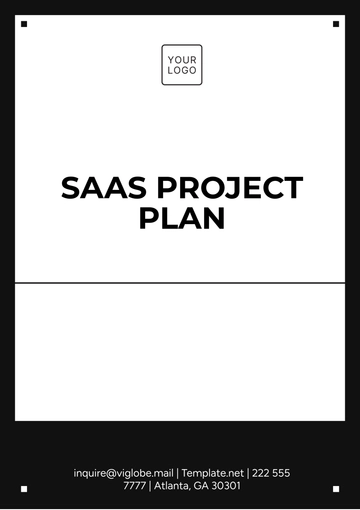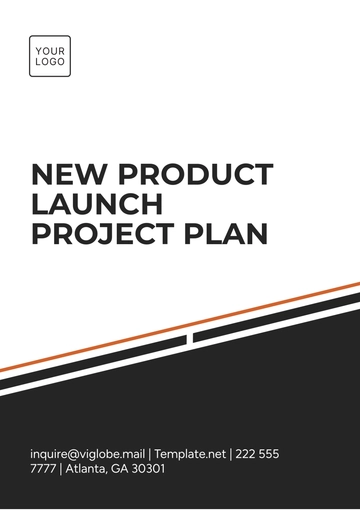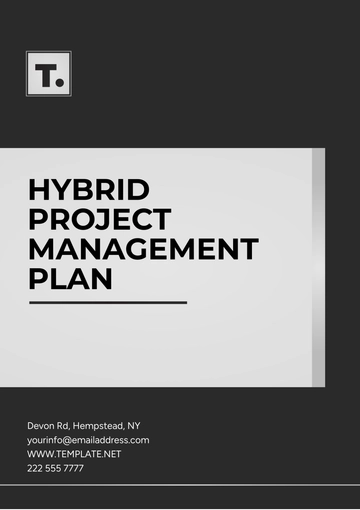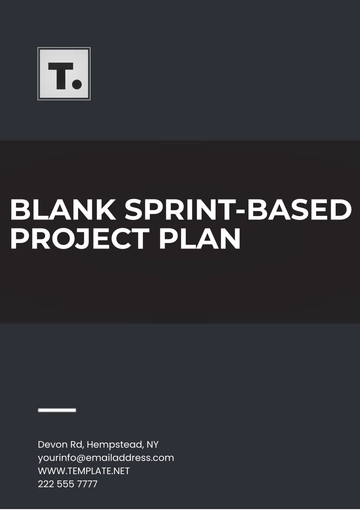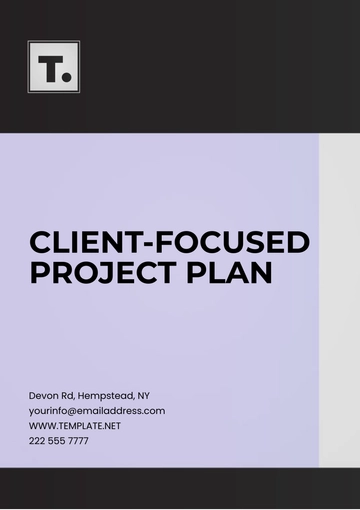Free Media Project Plan
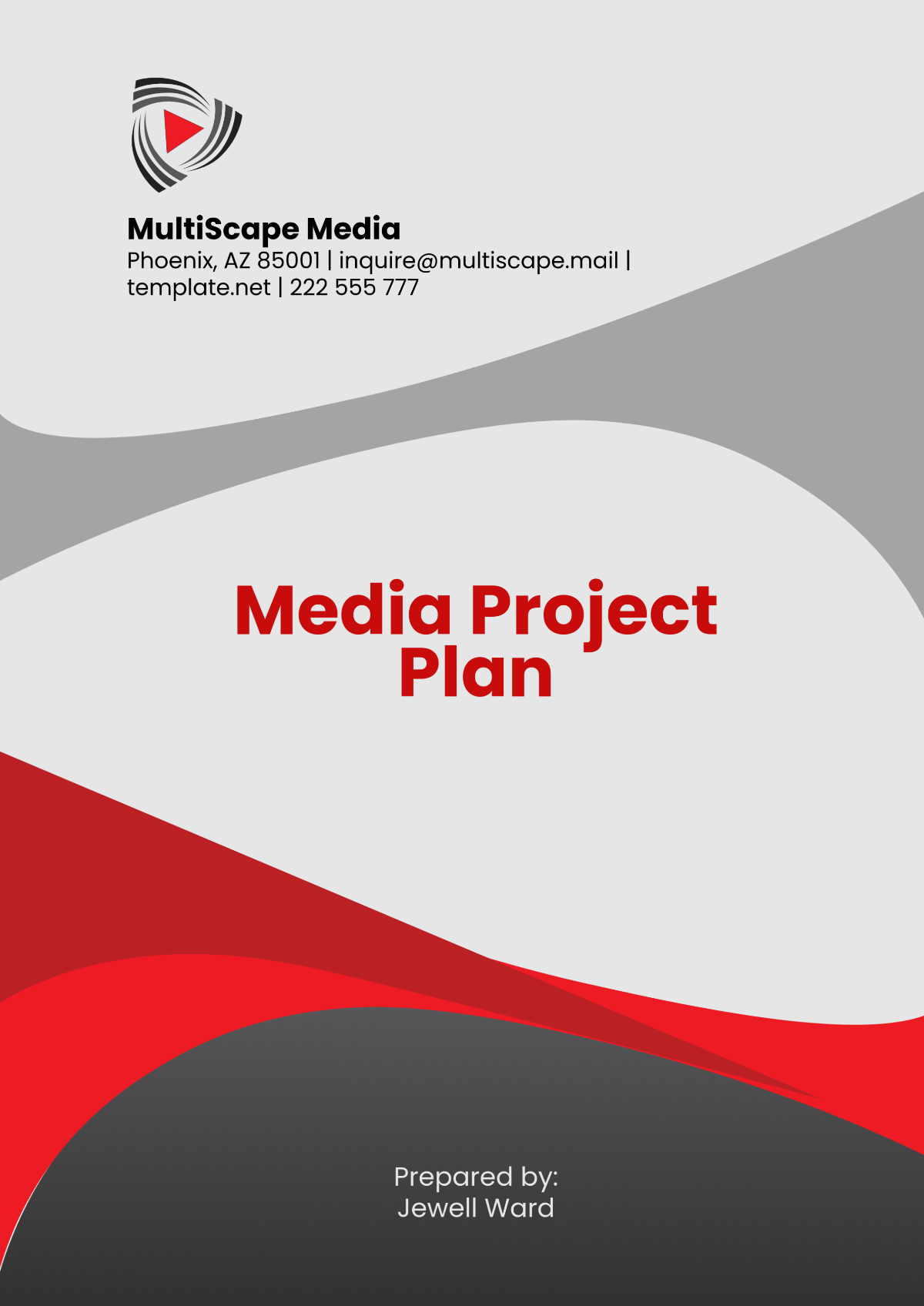
I. Executive Summary
The Media Project Plan is a comprehensive strategy designed to promote [Your Company Name] across multiple digital platforms, enhancing brand visibility, engagement, and customer conversion. This plan outlines the key components of the project, including content creation, marketing strategies, resource allocation, risk management, and performance evaluation. The primary goal of the initiative is to establish [Your Company Name] as an industry leader, with a focus on increasing engagement, improving revenue, and reaching key audience segments over the next few years.
In this document, we will detail all aspects of the media strategy, from content production and marketing efforts to the budget, timeline, and risk mitigation strategies. We aim for this project to position [Your Company Name] as a top-tier brand in its industry, maximizing audience engagement and driving significant returns on investment (ROI).
II. Project Overview
A. Project Scope
This project is an expansive media initiative aimed at achieving substantial growth in [Your Company Name]’s digital footprint. The project will involve creating and distributing high-quality content across various digital platforms, with a focus on targeted campaigns that align with business goals and customer needs.
The project will span two years, and the key deliverables include a range of media types, including videos, blog posts, podcasts, and social media campaigns. All content will be designed to engage target audiences, foster brand loyalty, and ultimately drive sales and conversions.
B. Objectives
The objectives of this media project are designed to help [Your Company Name] achieve its business goals and reach key performance indicators (KPIs). These objectives include:
Increase Brand Awareness: Expand the reach of [Your Company Name]’s content to a broader audience through targeted media campaigns.
Boost Engagement Rates: Generate higher interaction rates with content, such as likes, shares, and comments, particularly on social media.
Enhance Customer Conversion: Convert engagement into actionable outcomes, such as purchases or subscriptions.
Drive Revenue: Ensure that the media campaign contributes to a tangible increase in sales or other financial metrics.
Strengthen Industry Leadership: Position [Your Company Name] as an authoritative voice in its industry by producing insightful and valuable content that resonates with key industry stakeholders.
III. Media Strategy and Tactics
A. Content Creation
The foundation of this project is high-quality, engaging content that resonates with [Your Company Name]’s target audience. Content creation will focus on educating, informing, and entertaining potential customers. A diverse mix of content will be produced to cater to different platforms and audience segments.
1. Videos
High-quality video content will play a central role in the media strategy. Video is one of the most engaging content formats and has a proven track record of improving conversion rates and driving traffic. A series of [50] video segments will be produced, ranging from tutorials, product demonstrations, industry insights, and customer testimonials.
2. Blog Posts
Blogging remains an essential part of any digital content strategy. In this project, [Your Company Name] will produce [100] blog posts over the next two years. These posts will be optimized for search engines and will cover topics relevant to both the target audiences and the company’s business objectives. Each post will be optimized for search engines, ensuring that it ranks well on Google and attracts traffic.
3. Podcasts
Podcasts will be created to engage professionals, industry leaders, and potential customers with in-depth interviews, discussions, and analysis of business trends. A series of [10] podcasts will be produced over the next two years. These podcasts will be available on all major streaming platforms, including Spotify and Apple Podcasts.
IV. Resource Allocation
A. Budget Breakdown
The budget for this project has been carefully calculated to ensure that all phases of production, marketing, and post-campaign analysis are adequately funded. The detailed breakdown of the budget is as follows:
Category | Allocated Budget ($) |
|---|---|
Content Creation | $5,000,000 |
Marketing and Campaigns | $4,000,000 |
Tools and Software | $1,000,000 |
Human Resources | $3,000,000 |
Contingency Reserve | $2,000,000 |
Total | $15,000,000 |
B. Human Resources
A dedicated team of professionals will be assigned to the project to ensure smooth execution. The team will consist of content creators, marketing specialists, project managers, and technical experts, each contributing their unique skills to the project. The resources allocated for human resources are estimated to total $[3,000,000], covering salaries, training, and professional development.
1. Content Creation Team
The content creation team will include writers, videographers, graphic designers, and editors. They will work collaboratively to develop engaging and high-quality content for the campaign.
2. Marketing Team
The marketing team will handle campaign strategy, distribution, and performance analytics. They will also manage relationships with influencers and key stakeholders.
3. Project Managers
Project managers will oversee the planning, execution, and delivery of the project. They will ensure that the project stays on schedule, within budget, and meets all goals.
V. Project Risks and Mitigation
A. Risk Analysis
Identifying potential risks early in the planning process is essential to ensure that [Your Company Name] can respond quickly and effectively. Every project carries risks, especially in large-scale media campaigns, where many variables can influence the outcome. By anticipating these risks and establishing mitigation strategies, [Your Company Name] can navigate obstacles and stay on course.
1. Delayed Deliverables
Delays in content production or campaign execution can severely disrupt the overall timeline and hinder the success of the media campaign. Delays can be caused by various factors, including unforeseen technical issues, resource constraints, or challenges in coordinating with external vendors or partners.
Mitigation Strategy: To prevent delays, the project will include a structured timeline with clear milestones and checkpoints. Project managers will monitor progress at every phase, ensuring that teams adhere to deadlines. If a delay is anticipated, additional resources, such as temporary staff or external partners, will be allocated to expedite the process. Moreover, content buffers will be created to account for unforeseen delays, allowing for flexibility within the schedule. Regular weekly meetings will also be held to discuss progress, identify potential bottlenecks, and resolve issues before they escalate.
2. Budget Overruns
Unexpected costs are a common issue in large-scale projects. Whether it’s due to unforeseen resource needs, unanticipated costs for technology or software, or unexpected delays, budget overruns can significantly affect the project's financial health and ROI.
Mitigation Strategy: Budget overruns will be managed by maintaining a strict monitoring process, with finance and project management teams collaborating to track expenditures and forecast potential additional costs. Contingency funds will be set aside to cover any unforeseen expenses, ensuring that the project doesn’t exceed its budget. A monthly budget review process will be implemented, and adjustments will be made where necessary, ensuring that spending aligns with the financial goals of the campaign. If any non-essential activities go over budget, the scope of those tasks will be revisited or postponed.
3. Low Engagement Rates
Low engagement rates can undermine the success of digital campaigns, especially when the audience fails to interact with or share the content. Despite high production quality, content may not resonate with the target audience due to various factors, including misalignment with audience expectations or poor timing of the campaigns.
Mitigation Strategy: Engagement rates will be closely monitored through various analytics tools to ensure that content resonates with the target audience. Continuous A/B testing will be conducted for different content formats (e.g., blog posts, videos, and social media ads), adjusting strategies based on performance data. Additionally, marketing teams will work closely with influencers and industry experts to generate buzz and encourage interaction with content. Real-time feedback will be gathered from the audience through surveys and social listening, allowing for rapid content adjustments.
4. Resource Shortages
A shortage of critical resources—whether personnel, equipment, or technology—can cause delays, reduce the quality of the output, or disrupt the smooth running of the project. Staff turnover, unavailability of key personnel, or logistical challenges with resource procurement may lead to project setbacks.
Mitigation Strategy: To address this risk, cross-training will be implemented across key roles, ensuring that multiple team members are equipped to take on essential tasks if someone becomes unavailable. Furthermore, a robust vendor management strategy will be developed to ensure that external resources and partners are reliable and can meet the project’s needs. Backup equipment will be kept on standby, and contingency plans will be developed for technology failures or issues with outsourced tasks. Establishing strong relationships with external vendors and contractors will allow [Your Company Name] to quickly source alternative resources if necessary.
B. Contingency Plans
Despite the best-laid plans, unexpected events or challenges may still occur. Contingency plans are essential to ensure that the project remains on track, even if risks materialize. Having pre-established strategies and backup resources in place allows for swift recovery and ensures continuity of the campaign.
1. Time Management
To mitigate the risk of delays, the project will include flexibility in its timeline. Buffer periods will be incorporated into each phase of content creation and marketing rollout, allowing for adjustments if necessary. In the event of delays, additional resources will be added to speed up work and meet critical deadlines.
Contingency Action: Time buffers will be specifically designed for the content creation phase, where unforeseen issues such as technical difficulties or staff availability may arise. If a delay occurs, the project managers will activate the contingency plan, bringing in extra team members or outsourcing tasks to speed up production. Key project milestones will be re-assessed to ensure that the overall delivery timeline is maintained.
2. Budget Adjustments
If the project exceeds its allocated budget, corrective actions will be taken to mitigate the impact. This may include adjusting the scope of certain activities or reallocating funds from non-critical areas to more urgent ones. The contingency reserve will be used to manage any immediate financial shortfalls.
Contingency Action: The finance team will review budget performance monthly, comparing projected costs with actual expenditures. If an overrun is anticipated, adjustments will be made by scaling back on non-essential content or marketing efforts. For example, if the production of additional content goes over budget, some non-critical media formats may be postponed until additional funds can be secured. Additionally, alternate sources of funding or cost-sharing opportunities with partners could be explored.
3. Revised Campaigns
In the case of poor engagement or lack of traction with the target audience, the marketing team will pivot by adjusting the messaging, targeting, or channels used for the campaign. Quick adjustments can significantly improve engagement rates and help recapture audience interest.
Contingency Action: Regular monitoring of performance metrics, including click-through rates, conversions, and social media interactions, will provide the team with actionable insights. If certain content types or marketing campaigns are underperforming, marketing teams will test new strategies, such as different targeting parameters, new content angles, or different distribution platforms. Collaborative feedback sessions will involve both the content and marketing teams to brainstorm improvements in real time.
VI. Performance Metrics and Evaluation
A. Key Performance Indicators (KPIs)
To measure the effectiveness of the media project, a set of well-defined Key Performance Indicators (KPIs) will be used. These KPIs will track the progress of the project and provide insights into areas of success and opportunities for improvement. By focusing on measurable results, [Your Company Name] can make data-driven decisions to optimize the campaign as it progresses.
Metric | Target Value | Measurement Method |
|---|---|---|
Total Reach | 10 million users | Social media analytics |
Engagement Rate | 5% | Likes, shares, comments |
Conversion Rate | 2% | Landing page analytics |
Revenue Generated | $15 million | Financial reports |
Content Production Volume | 100 pieces | Content management systems |
1. Total Reach
The total reach of the campaign will measure how many unique users are exposed to [Your Company Name]’s content. This is a fundamental metric for evaluating the success of content distribution efforts. Social media platforms and website analytics tools will track reach across different channels, helping to assess the overall visibility of the campaign.
Target: Achieve a total reach of [10 million] users within the first one year of the project’s execution.
2. Engagement Rate
The engagement rate will reflect the level of interaction that users have with the content. This includes likes, shares, comments, and other forms of engagement on social media, blogs, and videos. High engagement indicates that the content resonates with the audience and encourages further interactions.
Target: Maintain an engagement rate of at least [5%] across all platforms.
3. Conversion Rate
The conversion rate will track how many users take desired actions, such as making a purchase, signing up for newsletters, or downloading content. This metric directly impacts ROI and indicates the effectiveness of the campaign in achieving its financial objectives.
Target: Achieve a conversion rate of [2%] across all channels.
4. Revenue Generated
Revenue generated will measure the direct financial return of the campaign. This can include online sales, subscriptions, or other revenue streams directly linked to the media project’s efforts.
Target: Generate $[15 million] in revenue by the end of the two-year campaign period.
5. Content Production Volume
Content production volume will measure the total amount of content produced during the project. This will include blog posts, videos, podcasts, social media content, and other assets. Ensuring that the production volume is on target will be crucial for maintaining consistent audience engagement throughout the campaign.
Target: Produce a total of [100 pieces] of content across all formats.
B. Data Analytics and Reporting
To ensure that the project is progressing according to plan, real-time data will be collected, analyzed, and reported regularly. Key performance metrics, such as reach, engagement, conversions, and ROI, will be tracked and compared against set targets. Weekly reports will be generated to provide insights into campaign performance, and monthly reviews will allow for adjustments and improvements to the strategy.
VII. Conclusion
A. Summary
The Media Project Plan outlined in this document provides a strategic roadmap for [Your Company Name] to enhance its digital presence, engage with its target audience, and ultimately drive sales and brand growth. Through a comprehensive analysis of objectives, timelines, and risks, this plan sets clear expectations and provides a framework for successful project execution.
By setting well-defined KPIs, creating robust contingency plans, and employing advanced data analytics, [Your Company Name] is equipped to deliver a successful campaign that meets both short-term milestones and long-term goals. Regular performance evaluations and the flexibility to adapt to market trends will ensure that the campaign remains effective and relevant, ultimately helping the company achieve its business objectives and establish a strong market position.
- 100% Customizable, free editor
- Access 1 Million+ Templates, photo’s & graphics
- Download or share as a template
- Click and replace photos, graphics, text, backgrounds
- Resize, crop, AI write & more
- Access advanced editor
Plan successful campaigns with the Media Project Plan Template from Template.net. This editable and customizable template helps outline objectives, timelines, and tasks for your media projects. Use the AI Editor Tool to make adjustments tailored to your campaign.
